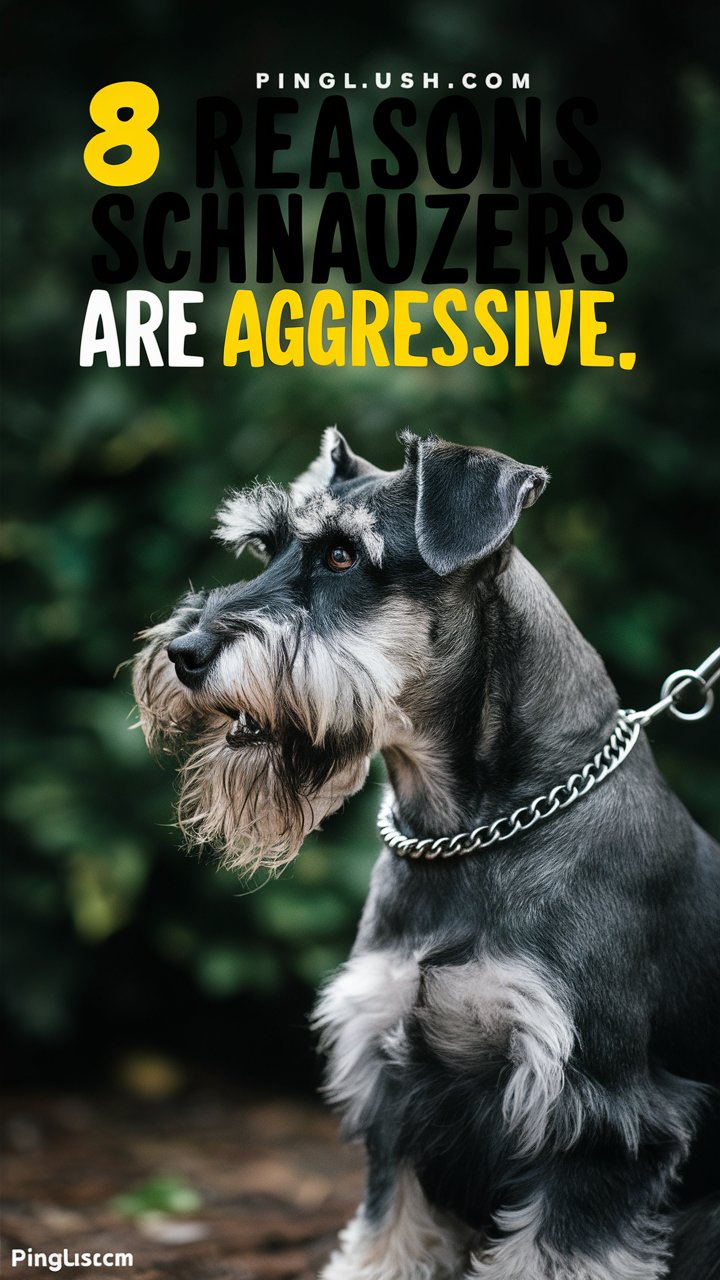Meta Description (Short):
Discover why Schnauzers get aggressive and learn 11 expert tips to calm your dog fast. Build trust, stop biting, and enjoy a peaceful bond.
🐶 Introduction: Is Your Schnauzer Showing Aggression?
Does your Schnauzer bark excessively, growl, or even snap without warning? You’re not alone. Many Schnauzer owners face these challenges — but here’s the good news: aggression isn’t your dog being “bad.” It’s a signal — a cry for help or misunderstanding.
Whether your pup’s aggression stems from fear, frustration, or past trauma, this in-depth guide breaks down why it happens and gives you proven training strategies used by professional behaviorists to fix it — step-by-step.
Let’s uncover the real reasons behind Schnauzer aggression and transform your dog’s behavior with compassion and science.
🧠 Why Schnauzers Become Aggressive: 8 Root Causes
Understanding the cause is the first step to fixing the behavior. Each reason needs a specific solution — guesswork leads to failure.
1. Fear-Based Aggression
Schnauzers often react aggressively when scared or threatened. Loud noises, sudden movements, or unfamiliar faces can trigger a fight-or-flight response.
🧩 Behavioral Insight: Fear-based aggression is not dominance — it’s insecurity. Punishment worsens it.
✅ Fix: Use desensitization. Slowly expose your dog to triggers in a calm, controlled way, rewarding relaxed behavior.
2. Protective or Territorial Behavior
Bred originally as guard dogs and ratters, Schnauzers have natural instincts to defend their space and loved ones. This can lead to barking, lunging, or biting when someone enters their “zone.”
✅ Fix: Teach “Quiet” and “Place” commands. Let your dog learn when it’s appropriate to alert — and when it’s time to relax.
3. Lack of Early Socialization
Schnauzers who miss socialization between 8–16 weeks may grow fearful or defensive around strangers, kids, or other pets.
✅ Fix: Gradually reintroduce new environments and people. Reward calm curiosity — never force interaction.
4. Frustration or Redirected Aggression
If a Schnauzer is restrained or overexcited (e.g., behind a leash or window) and can’t reach a target, frustration may turn into aggression toward nearby people or dogs.
✅ Fix: Practice impulse control training — teach “Look at Me” or “Leave It.” This redirects focus before aggression builds.
5. Dominance or Control-Seeking
Though less common, some Schnauzers test boundaries — especially if leadership is unclear. They might guard food, toys, or space.
✅ Fix: Use positive leadership, not punishment. Set consistent rules, and reinforce calm submission through structured routines.
6. Pain or Medical Conditions
Aggression can stem from discomfort — arthritis, dental pain, ear infections, or thyroid issues.
✅ Fix: Always rule out health issues. Visit your vet for a full checkup before assuming behavioral causes.
7. Poor Training or Harsh Methods
Shouting, hitting, or punishment-based training creates fear and distrust, fueling aggression instead of solving it.
✅ Fix: Use positive reinforcement — reward what you want, ignore or redirect what you don’t.
8. Hormonal Changes (Unneutered Dogs)
Unneutered males may show increased dominance or aggression toward other males due to hormonal drives.
✅ Fix: Consult your vet about neutering if behavior becomes unmanageable.
⚠️ Common Mistakes Owners Make (Weak Points to Avoid)
🚫 Yelling or punishing aggression
🚫 Forcing interactions with triggers
🚫 Ignoring warning signs (growling, stiff body)
🚫 Skipping daily mental stimulation
🚫 Inconsistent rules between family members
💡 Remember: Your Schnauzer isn’t defiant — they’re communicating confusion or stress. Your job is to guide, not punish.
🦴 11 Pro Training Tips to Stop Schnauzer Aggression
These methods combine behavioral science + real-world experience to calm aggression and rebuild trust.
1. Track Triggers in a Behavior Journal
Write down when, where, and why aggression occurs. Identifying patterns helps you target root causes.
2. Desensitize Step-by-Step
Expose your dog gradually to the trigger from a safe distance. Pair it with treats and calm praise.
3. Reward Calm Energy
Catch your Schnauzer being calm. Reinforce with treats or gentle praise — reward the behavior you want, not the one you fear.
4. Teach “Look at Me” Command
A strong focus cue interrupts reactive moments. Reward eye contact during stress triggers to regain control.
5. Structured Routine = Calm Dog
Schnauzers thrive on predictability. Fixed meal, walk, and training times reduce anxiety and aggression.
6. Increase Physical & Mental Exercise
Understimulated Schnauzers act out. Add puzzle toys, scent games, agility drills, and fetch sessions to burn energy.
7. Leash Training with Patience
Use a front-clip harness to control lunging. Practice loose-leash walking and reward calm behavior near other dogs.
8. Avoid Harsh Corrections
Fear kills trust. Replace “No!” with redirection — e.g., “Sit,” “Focus,” or “Let’s go.” Calm energy beats confrontation.
9. Socialize Slowly
Introduce friendly dogs one at a time in neutral areas. Watch body language — reward curiosity, not tension.
10. Confidence-Building Games
Try obedience drills and trick training. Mastery builds self-assurance, reducing reactive fear.
11. Consult a Certified Behaviorist (If Needed)
If aggression escalates, seek help. Professional trainers (CPDT-KA, IAABC) use humane, evidence-based methods.
🧘 Bonus: Calming Aids That Help
- Snuffle Mats (mental stimulation)
- Adaptil Calming Collar
- CBD chews (vet-approved)
- Weighted blankets for anxiety
💬 Final Thoughts
Aggression in Schnauzers doesn’t mean your dog is broken — it means they’re overwhelmed. With patience, structure, and compassion, you can rebuild their trust and confidence.
You’re not just training behavior — you’re nurturing a lifelong bond built on understanding, respect, and love.
❤️ Stay calm. Stay consistent. Your Schnauzer will follow your energy.
